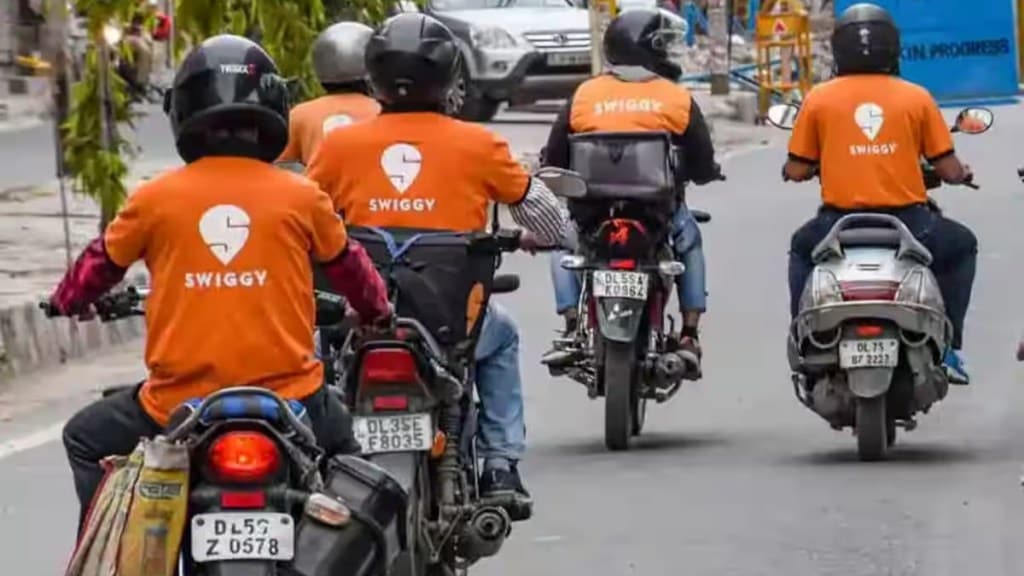While Zomato has been the only listed food delivery platform in India until now, Swiggy is upping its game and is all set to become the second company in the food-tech space to get listed. Online food delivery aggregator Swiggy is targeting an IPO launch in November with the company having officially received a green light from the Securities and Exchange Board of India (SEBI) for its much-anticipated public listing. Swiggy has also now filed its updated Draft Red Herring Prospectus (DRHP) with the SEBI for an IPO to raise Rs 3,750 crore through a fresh issue and an offer for sale (OFS) expected to exceed Rs 6,500 crore, bringing the combined IPO size to well over Rs 10,000 crore.
With the funds raised, Swiggy plans to use it primarily to expand its quick commerce segment and strengthen its infrastructure. Per reports, Rs 137.41 crore will be allocated for debt repayment of its subsidiary Scootsy, while Rs 982.40 crore will be invested in expanding Scootsy’s dark store network.
Of this, Rs 559.10 crore will be used for setting up new dark stores, and Rs 423.30 crore will be spent on leasing or licensing payments. Additionally, Rs 586.20 crore will be put in technology and cloud infrastructure, Rs 929.50 crore for brand marketing and business promotion, and the remaining funds will support inorganic growth and general corporate purposes.
In terms of investors, Swiggy has not only drawn venture capital heavyweights but also celebrity investors. Several Bollywood stars and sports personalities have acquired stakes in the company in the unlisted market ahead of the IPO. Per reports, investors include Amitabh Bachchan, Madhuri Dixit, and Karan Johar. Cricketers Rahul Dravid and Zaheer Khan, tennis star Rohan Bopanna, and Innov8 founder Ritesh Malik have also invested in Swiggy’s pre-IPO shares. Global investors including SoftBank Vision Fund, Prosus, Accel, and Elevation Capital also hold significant stakes in Swiggy. Additionally, Raamdeo Agrawal, chairman of Motilal Oswal Financial Services, is among the key shareholders. Things, it seems, are getting interesting for the food delivery aggregator.
Swiggy’s growth journey
Swiggy was founded in 2014 and had a valuation of nearly $13 billion in April. According to Tracxn, the company’s revenue was recorded at Rs 11,600Cr ($1.41 billion) as on March 31, 2024 and has 4,439 employees as on July 31, 2024
Swiggy has reduced its losses by 43 per cent in FY24 to Rs 2,350 crore, fueled by growth in both its food delivery and quick commerce segments. The company’s revenue from operations grew by 36 per cent to Rs 11,247 crore in the same fiscal year. The company’s consumer-facing business, which includes food delivery, Instamart, and its dining services, reported a gross order value (GOV) of Rs 35,000 crore. Swiggy’s Instamart posted a gross revenue of Rs 1,100 crore in FY24, and its GOV stood at Rs 8,100 crore, indicating healthy demand.
…in comparison to Zomato
Meanwhile, Zomato had gotten listed in 2021 and later with its quick commerce expansion through the Blinkit acquisition, the company grew into a $20 billion-plus company. Q1FY24 was the first quarter when Zomato had posted a quarterly net profit. Zomato posted robust Q1 numbers with profit at Rs 253 crore, posting a growth of 12550 per cent in comparison to Rs 2 crore recorded during the corresponding quarter of FY24. It posted revenue from operations at Rs 4,206 crore, up 74.1 per cent as against Rs 2,416 crore during the same period of previous fiscal year.
Zomato had posted gross order value (GOV) growth across its B2C businesses (food delivery, quick commerce and going-out) at Rs 15,455 crore, up 53 per cent YoY. Meanwhile, food delivery GOV grew by 27 per cent on-year, quick commerce GOV posted growth of 130 per cent YoY and going-out GOV increased by 106 per cent YoY. The company’s B2B business Hyperpure’s revenue grew by 96 per cent YoY with improving profitability.
In an exchange filing, Zomato had also announced that it is planning to have 2,000 stores for its quick commerce vertical Blinkit by the end of 2026. “Most of these stores would be in the top 10 cities in India. Beyond the large cities, the size of the market is still undiscovered. How fast we are able to get to this store count, will depend on how well we execute, i.e., how we build our team and how efficiently we scale our supply chain,” said Blinkit CEO Albinder Dhindsa. Further, a report released by BNP Paribas earlier, also stated that Zomato’s average monthly active restaurant partners increased from 61k in FY19 to 270k as of FY24.
If we talk about the ongoing competition between the two platforms, while Zomato grew at nearly 29 per cent in July (year-on-year), Swiggy recorded 11 per cent growth during the same period, a report stated. Zomato logged a 1.6 per cent order growth on a month-on-month basis, which was healthier compared to Swiggy’s 4.6 percent decline.
Another drawback for Swiggy may be its smaller presence as compared to Zomato. While the Bengaluru-based company is present in around 580 cities, Zomato caters to more than 750 cities currently, stated a Jefferies report. Further, Zomato is also downloaded more times from app stores as compared to Swiggy.
The two companies also compete in the quick-commerce space with Zomato’s Blinkit and Swiggy’s Instamart. Analysts said Instamart was the category leader but because Swiggy built the unit in-house, and Zomato acquired a company, the former ended up spending a significant amount on Instamart. According to a UBS report, Blinkit had the highest market share among quick commerce players as of July. Swiggy Instamart was in second position followed by Zepto and BigBasket.

